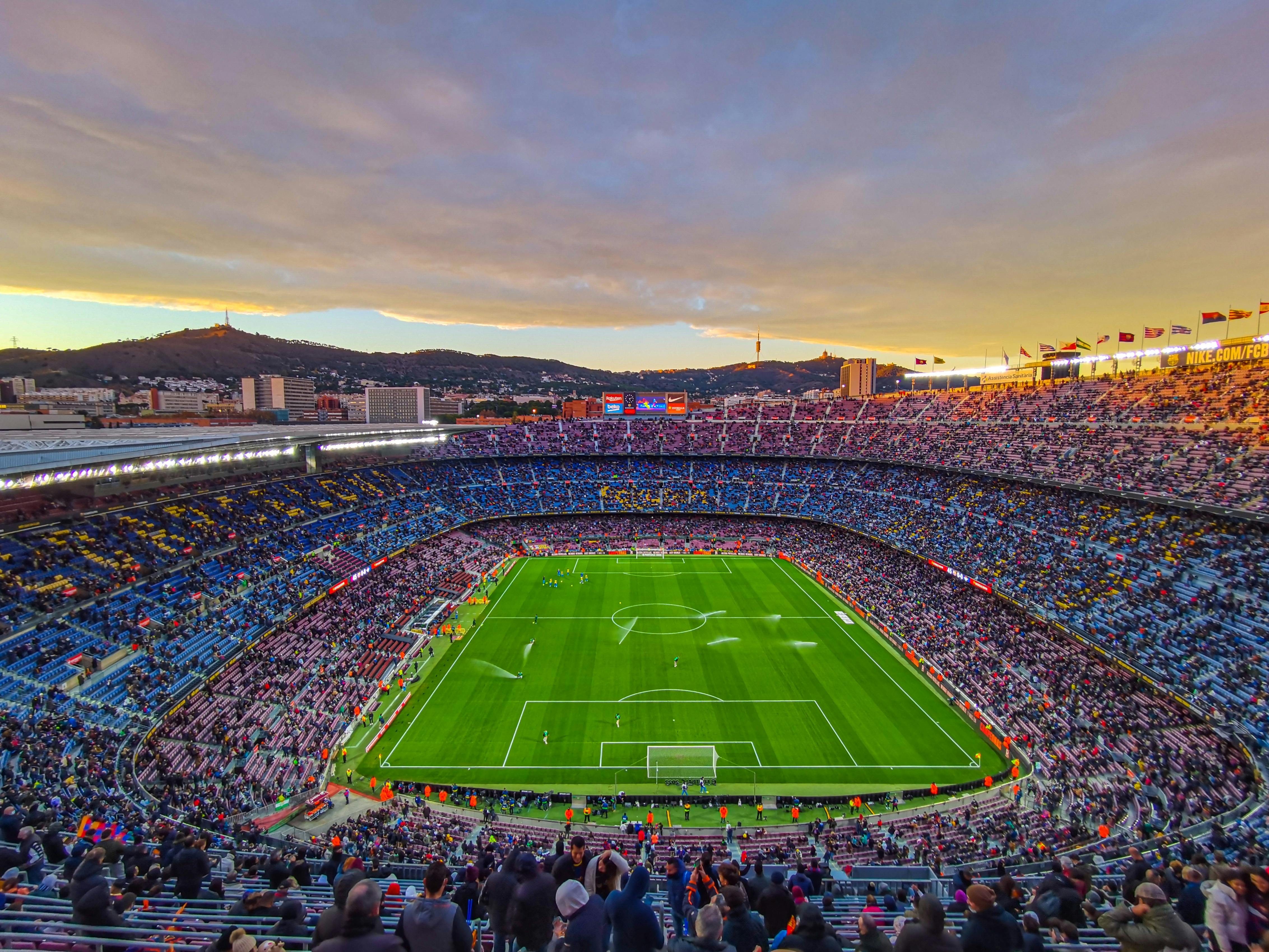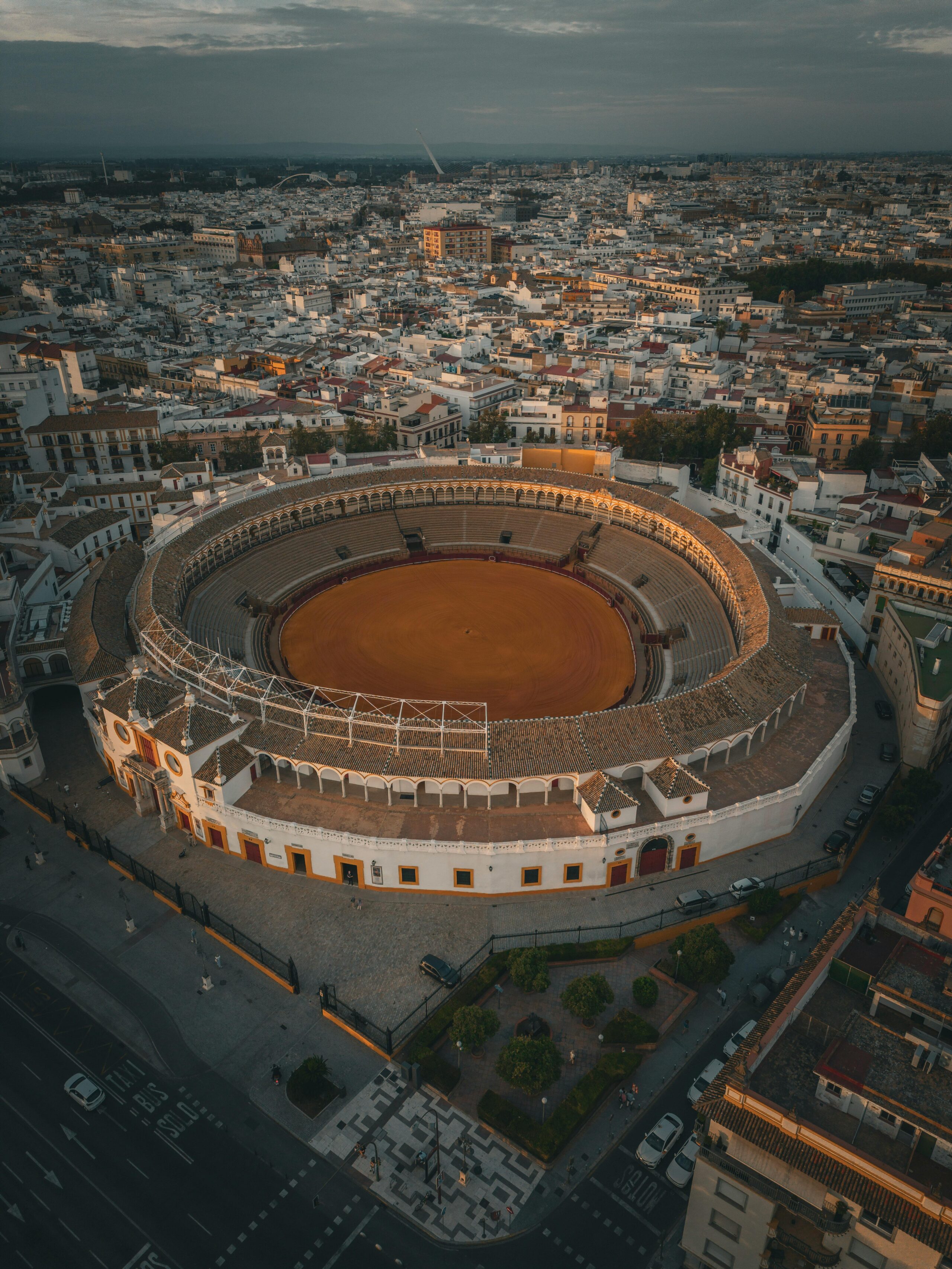Sports in Spain: A Complete Guide to History, Culture & Top Events
There’s something I have to admit right off the bat: for me, exploring sports in Spain has always been about so much more than goals, scores, or trophies. The real magic? It happens in the stands, in tiny local stadiums, on sun-beaten tennis courts, or during those impromptu street celebrations after a big win. Here’s the thing—even if you’re not glued to the latest transfer news or up at 2 a.m. for a Champions League replay, Spain’s sporting DNA is contagious. It’s woven into the language, the food, the whole pulse of community life. And if you’re traveling in Spain (or even just dreaming about it), understanding the local sports scene will open doors to insider experiences, unforgettable memories, and—honestly—some lifelong friendships. I’ve lived it. I’ve made mistakes, discovered hidden gems, and found myself chanting with strangers in more than a few languages.
Why Sport Matters in Spain: More Than Just Games
Let me paint a scene: It’s 8 p.m. on a Sunday. Neighborhood bars fill with fans wearing scarlet and blue, paella simmers behind the counter, and grandparents argue (lovingly—most of the time) about which local teenager might be “the next Messi.” For Spaniards, sport isn’t just entertainment or exercise—it’s a binding force, a multi-generational glue, and, occasionally, a source of national pride or deep-rooted rivalry1. It shapes local economies, defines weekly rhythms, and even influences Spain’s global reputation. Having spent years attending both titanic finals and children’s tournaments, here’s what stands out: the emotional stakes always feel high.
In Spain, “sport” is inseparable from identity—cultural, regional, political, and personal. Understanding Spanish sport means glimpsing the heart of the country2.
A Brief History of Spanish Sport: Roots, Renaissance, and Rivalries
If you’re picturing endless sunshine, golden fields, and the roar of crowds—well, fair enough. But the true roots of Spanish sport are entwined with conquest, politics, and social change. Early forms of basketball and football arrived with British workers in the 1800s, but sport wasn’t truly “democratized” until the 20th century—a messy, passionate process influenced by civil war, dictatorship, and finally, democracy3. During Franco’s era, football became an unlikely vehicle for both repression and resistance (especially in the Basque Country and Catalonia). But by the 1980s and 1990s, sport had burst onto the global stage: Spain hosted the 1992 Barcelona Olympics, cementing its status as a sporting superpower.
“Sport is a social phenomenon in Spain—one that crosses class, region, and age. It’s a key to understanding our recent history.”
Funny thing is, even after all these years, I still stumble across local traditions I knew nothing about: Valencian pilota, Basque pelota, or even the sacred “romería” hiking pilgrimages. What really excites me is how old customs blend with world-class professionalism. There’s always something new to learn (or re-learn)
Spain’s first football club, Recreativo Huelva, was founded by British expatriates in 1889. It’s now the oldest “fútbol” club in Spain—a tiny team with outsize historical significance4.
Football in Spain: Not Just a Sport, a National Drama
Let’s cut to the chase: fútbol is Spain’s national religion5. Even people who claim they “don’t care”—trust me, they know the La Liga standings. What really struck me, especially early on, was how conversations about Real Madrid or Barça spill into everyday life. Try ordering a coffee in Madrid on derby day—it’s impossible not to get pulled into a debate. Why is this? Some say football played a crucial healing role post-Civil War, offering an emotional outlet and a sense of unity. Others point to the fierce regional rivalries (Madrid vs. Barcelona, Betis vs. Sevilla, Athletic vs. “the rest of Spain”) that mirror deeper linguistic and political divides. Based on my (not so scientific) experience: no other sport inspires quite the same love, hate, and sheer drama in Spain.
La Liga: Icons, Upsets, and Global Reach
According to industry reports, La Liga is now broadcast in over 180 countries, with 2.8 billion followers worldwide6. That’s no accident: brands like Real Madrid, FC Barcelona, and Atlético Madrid have spent decades building both winning teams and global fanbases. What really gets me is how much the league has adapted in recent years—COVID-19 forced clubs to rethink ticketing, digital fan engagement, and youth development entirely7. I remember sitting in a half-empty stadium in 2022, marveling at how fans “zoomed” in on giant screens while kids watched matches from home, jerseys on, vuvuzelas in hand. Change, it seems, is the only constant.
“The Clásico” (Real vs. Barça) isn’t just Spain’s top rivalry—it’s a worldwide phenomenon. Ticket demand, hotel prices, and even airfares spike weeks in advance.
| Club | Founded | Major Titles | Stadium Capacity |
|---|---|---|---|
| Real Madrid | 1902 | 35 La Liga, 14 Champions League | 81,044 |
| FC Barcelona | 1899 | 27 La Liga, 5 Champions League | 99,354 (pre-renovation) |
| Atlético Madrid | 1903 | 11 La Liga, 3 Europa League | 68,456 |
The Spanish National Team: Triumph, Tears, and Total Football
Sometimes, it’s easy to forget that Spain, for much of its history, was considered an underdog on the international stage. And then—2008 happened. The men’s national team (La Roja) won Euro 2008, the 2010 World Cup, and Euro 2012, pioneering a “tiki-taka” style that left opponents breathless8. I still remember grown men weeping (openly!) in Madrid’s Plaza Mayor after Iniesta’s World Cup goal. These were genuinely transformative moments, not just for football but for Spanish society. But I’ll be honest: there’s been a bit of a post-Golden Generation hangover—the team’s tactics, leadership, and generational shift continue to fuel bar-stool debates nationwide.
Basketball, Tennis, and Other Powerhouses: More Than Just Football Country
If you think Spain is a “one-sport” land, think again. Basketball and tennis are, arguably, Spain’s most successful international sports behind football. What I love about both is how they mix global stars with a surprisingly robust local following. Let me take you through the standouts:
- Basketball: The ACB Liga Endesa is Europe’s top domestic league, and Spanish clubs (like Real Madrid and FC Barcelona) regularly dominate the EuroLeague9. The men’s national team has won multiple European Championships and, in 2019, captured its second FIBA World Cup. I’m still learning to appreciate the strategic side of Spanish hoops, honestly—it’s less about highlight dunks, more about tactical nous and chemistry.
- Tennis: Spain has produced a shockingly consistent pipeline of champions: think Rafael Nadal, Garbiñe Muguruza, Carlos Alcaraz. The clay courts of Roland Garros have practically become “Spanish territory” in the Open era10.
- Cycling: Events like the Vuelta a España attract global talent, and Spanish cyclists—Contador, Indurain, Valverde—remain legends.
- Motorsport: Fernando Alonso (F1) and Marc Márquez (MotoGP) have sparked a new generation of racing fans.
Here’s something that’s evolved in my perspective: I used to think Spanish sport success was mainly about football’s reach. These days? I’m convinced it’s the wide base of community and school programs driving so many world-class athletes across sports. It’s a lesson in grassroots development I wish other countries would take to heart.

Unique & Regional Sporting Traditions: More Than Meets the Eye
I have to laugh—just when I think I know Spanish sport, I stumble upon something new. Basque rural sports (deportes rurales vascos) like aizkolaritza (woodchopping) and harrijasotzaileak (stone lifting) are the stuff of legend in the north11. Meanwhile, Catalonia and Valencia celebrate castells (human towers), running races through narrow medieval streets, and “pilota valenciana”—a blisteringly fast, barehanded ball sport. If you’re the sort who loves to go off the beaten path, these regional events offer an authentic window into centuries-old traditions. I’m still astonished at the pride—and skill—these local athletes display.
- Basque Country: Pelota (a catch-all for ball games, including Jai Alai), aizkolaritza (wood-chopping), harrijasotzaileak (stone-lifting)
- Valencia: Pilota Valenciana
- Navarra: Bull running (most famous in Pamplona) and other festival games
- Andalusia: Flamenco-infused jockeying, equestrian vaulting, and pádel (the social sport sensation)
Attend a local festival (fiesta de pueblo) in Spain—you’re virtually guaranteed to see sports you didn’t know existed. Ask locals for the schedule; most are more than happy to invite an outsider to join in (especially if you cheer for their hometown favorites).
Fan Culture, Major Events & Traveling for Sport
Can I be totally honest? Spanish fan culture is, at times, both exhilarating and intimidating. The volume alone at a top La Liga match or a basketball final is enough to shake your bones. But it’s more nuanced than that. There’s a sense of ritual: the “previa” (pre-game gathering), marches to the stadium, the shared tapas, the superstitions, the post-match celebrations or commiserations. Even as an outsider, you’ll be welcomed if you approach with enthusiasm and respect12. What I cherish is the way sport creates spontaneous communities—win or lose.
- Travel logistics: Major cities sell out hotels during big events—book early, and expect price surges for “El Clásico” or Copa del Rey finals.
- Etiquette: Stand, sing, and clap, but remember—some traditions are sacred. Never bring up past scandals unless you really know your company!
- Food & drink: Every stadium (even tiny local ones) has its own culinary specialties. Churros and chocolate? Yes, please.
Spain is one of Europe’s top sports tourism destinations, drawing more than 10 million international visitors a year specifically for sporting events (pre-pandemic data)13. Formula 1’s Spanish Grand Prix, the Mutua Madrid Open, and the Vuelta a España are just a few globally sought-after tickets.
Women in Spanish Sport: Triumphs, Struggles, and a New Wave
I have to own up to this: ten years ago, I barely paid attention to women’s football in Spain. These days? The clip reels and sell-out stadiums say it all. The transformation has been astonishing—in both football and beyond. The national team’s World Cup win in 2023 signaled a generational shift, but local stars in basketball, handball, and tennis have been breaking barriers for ages14. Progress remains uneven (especially with funding, media coverage, and professional contracts), but the momentum is now impossible to ignore. A colleague recently pointed out that, not so long ago, almost no one could name a female footballer in Spain. Nowadays—well, just say “Alexia Putellas” to any sports fan, and you’ll get knowing nods across a crowded bar.
- 2019: Real Sociedad wins the Copa de la Reina in front of a record crowd
- 2022: FC Barcelona Femení regularly outdraws many male teams in Champions League matches
- 2023: Spain wins the Women’s World Cup, inspiring grassroots participation nationwide
“What matters now is giving every child in Spain—boy or girl—the chance to dream of sporting greatness.”
Here’s a conviction I’ve developed: the future of sport in Spain is unthinkable without the women who continue to change the game, both on the field and behind the scenes. There’s more work ahead, of course. But I’ll say it—this is one sports revolution I’m thrilled to witness up close.
Challenges, Innovation & What Comes Next for Sport in Spain
It’s tempting—especially if you love a country—to see only the highlights. But Spanish sport, like all else, has its challenges. Infrastructure (especially in rural areas), access for young athletes of all backgrounds, and balancing tradition with innovation are daily debates. And COVID-19 revealed just how vulnerable Spanish sport can be to sudden disruptions15. But here’s what gives me hope: the energy for adaptation. Spanish leagues were among the first to pioneer “digital attendance,” virtual fan zones, and hybrid events. There’s an openness here—a willingness to blend old and new, local and global.
Curious about attending a match or trying a local sport? Don’t just watch—get involved! Local rec centers (polideportivos) welcome visitors. Language isn’t a barrier when you can cheer, run, or even join a neighborhood pétanque game.
- Post-pandemic recovery: Clubs are investing in contactless ticketing, mobile-first fan engagement, and new formats for events.
- Sustainability: From solar-powered stadiums to eco-conscious event logistics, “green sport” is rising on the agenda.
- Diversity & Inclusion: More campaigns spotlighting LGBTQ athletes, anti-racism measures, and rural sport development.
The more I reflect, the more convinced I am: Spain’s sporting landscape will keep changing—but never lose its heart. “La pasión nunca muere”—the passion never dies.
Conclusion, FAQs & Additional Resources
If there’s one thing I want readers to take away, it’s this: sport in Spain is an invitation. Whether you’re shouting yourself hoarse at Camp Nou, watching pelotaris in a Basque village, or playing pickup basketball in Seville, you’re part of a story that’s still being written. Don’t be afraid to jump in—ask questions, try new things, make mistakes. That, more than anything, is the Spanish way.
- When is the best time to catch a major sporting event? Early spring (March–May) and autumn (September–November) are packed with football, tennis, and cycling action.
- How can visitors buy La Liga tickets? Use official club sites or trusted partners; resale scams are sadly common.
- Are local sports “tourist-friendly”? Absolutely—many towns stage open tournaments and welcome newcomers.
- Is Spain safe for solo sports travel? By and large, yes—just pay attention to your surroundings, especially in late-night celebrations.
Schema Markup Implementation Guidance
For publishers: Implement Article structured data schema including headline, image, author, and event details for richer Google display. Add SportsEvent markup for major match/event listings. For ticketing, use Offer + Event schema to enhance visibility on search.


